If a survey of the history of relationship between Myanmar and North Korea is ever undertaken, then it would be appear that the association between the two in the past has been anything but rosy. There was no diplomatic relations during the years that followed Myanmar’s independence from Britain in 1948, and indeed Myanmar even endorsed the UN Security Council’s declaration of July 1950 terming North Korea as the aggressor during the Korean War. But with the ouster of independent Myanmar’s first prime minister, U Nu in a military putsch in March 1962, full diplomatic relations were established with North Korea, and with Gen. Ne Win in the seat of governance in Yangon after the coup-de-tat, the refrain in the region was that both the countries were engaged in a “common anti-imperialist and anti-colonial struggle.” Visits by dignitaries, including Gen. Ne Win to Pyongyang—purportedly goaded by Rangoon’s need to neutralise a second support front for the Communist Party of Burma, which already had any ally in China in the North—strengthened ties between the two countries. However, the 1983 Rangoon assassination attempt bombing by North Korean operatives aimed against visiting South Korean president, Chun Doo Hwan (21 people lost their lives in the explosion, even as Hwan escaped the attempt!) soured relationship between the two countries. Indeed, the North Korean embassy in Rangoon was closed down and its personnel were deported in the aftermath of the bombing.
Destiny, however, had different natal charts for the South East Asian countries, and the 1988 nation-wide uprising against the military regime in Yangon by the Myanmarese people, which was put down with a heavy hand (which found criticism throughout the world), found a sympathetic China, and soon Myanmar was on its way to becoming a client state of the People’s Republic. The movement against the military regime in Myanmar paved way to the realisation that a modernisation of the armed forces had become an imperative in the face of not only the communist insurgency, but the uprisings against Yangon that was being spear headed by the ethnic groups such as Was and the Kachin. Soon Myanmar was importing huge shipments of arms from China in order to battle the ethnic tribes in the latter’s quest for liberation. It is reported that Beijing supplied Myanmar military hardware worth about $2 Billion during the 1990s. The arsenal—reliable sources state—comprised of 80 Type-69II medium-battle tanks, more than 100 Type-63 light tanks, 250 Type-85 armoured personnel carriers, multiple launch rocket systems, howitzers, anti-aircraft guns, HN-5 surface-to-air missiles, mortars, assault rifles, recoilless guns, rocket-propelled grenade launchers, JLP-50 and JLG-43 air defence radars, heavy trucks, Chengdu F-7M Air guard jet fighters, FT-7 and FT-6 jet trainers, A-5C ground attack aircraft, SACY-8D transport aircraft, Hainan class patrol boats, Houxin-class guided missile fast attack craft, minesweepers and small gunboats. The inventory also included 12 Karakoram-8 ground attack aircraft, which was jointly produced by China and Pakistan. It has been analysed that one of the reasons for Chinese largesse to Myanmar was the dragon’s need to gain a port-hold onto the Indian Ocean and the blue waters, not only for the protection of its energy sea-lanes that lay in the route to China by way of the Malacca Straits, but also for strategic reasons that entailed India and other extra-regional powers as well that had engendered the region by their intimidating presence. To that end, Beijing’s aid to Myanmar in the upgradation of its maritime facilities, particularly the ELINT bases along the Bay of Bengal and the Andaman Sea, which included Hainggyi Island in the Irrawaddy basin, Zadetkyi Island north of the Malacca Straits, Man-aung Island off the coast of Rakhine and, of course, Coco Island abutting the Andamans, all of which were in China’s strategic interests were observed as well.
However, Yangon was not quite at ease with the heavy dependence on Beijing for its armaments and it began to look elsewhere including Ukraine from which it purchased not so inconsiderable armour (T-72 Tanks). All this while, Yangon was surreptitiously attempting to court Pyongyang, and indeed if had succeeded in engaging the North Koreans diplomatically, first in western capitals and in Thailand, and thereafter directly. A series of high level visits took place between Myanmar and North Korea, the most prominent being the visit to Pyongyang in late 2008 of Gen.Thura Shwe Mann, Joint Chief of Staff of the Myanmarese army and number three in the junta.
Cash-strapped Myanmar—although more familiar with Chinese military design and mode of operation—were eager to do renewed business with North Korea, especially as the latter’s wares were cheaper and was willing to enter into barter deals. Furthermore, for reasons that can only be attributed to high subterfuges of stratagem, China played an important behind-the-scene role to bring the once estranged Myanmar and North Korea together, perhaps to construct a new lane of aggression from Chinese mainland to the sea. Thereafter, a series of visits and arms transfer took place between the two nations. Although initially the arms import from Pyongyang was confined to conventional weaponry, including a huge consignment of 130 mm Type 58 artillery pieces, as also North Korean made Surface-to-Surface missiles for Myanmar’s Houxin guided missile boats and 122 mm multiple rocket launching vehicles, the real threat to regional stability stemmed from Naypyidaw’s possible acquisition of a number of Hwasong (Scud-Type) short range ballistic missile from North Korea. While in the scheme of things, the arsenal that is being procured by Naypyidaw from Pyongyang does not compare numerically with the size that Myanmar procures from Beijing, the rub lies in the fact that Myanmar is attempting to acquire nuclear capability with North Korean aid. In this context, there has been a report that two Pakistani nuclear scientists, Suleiman Asad and Mohammad Ali Mukhtar hastily departed for Myanmar in the aftermath of 9/11, ostensibly not only to escape United States censure, but aid the nuclear programme of Myanmar.
Naypyidaw is in the eastern foothills of Myanmar, a capital shifted ostensibly for fear of United States attack on coastal proximate Myanmar. It also reportedly houses North Korean type tunnels that cloak the WMDs that they are both procuring and producing with North Korean assistance from prying US satellites. While Beijing continues to be a major military ally in Naypyidaw’s plans for military self-sustenance, the equation seems to have of late shifted from Beijing to Pyongyang, albeit for reasons of exigencies. The swing was probably as a result of a) Beijing’s encouragement to Naypyidaw vis-a-vis Pyongyang, an ally that could aid extra-regional containment (United States) in the event of a crisis that it might get drawn into because of Taiwan b) forge an military alliance that can forestall the United States, Japan and India and c) contrary to the above two points, as also US president Obama’s Myanmar engagement policy, the junta has realised that it must seek relief from its over-dependence on China and look for simpler sustenance and legitimacy elsewhere, especially as there is growing resentment inside the country against Chinese export of work force into Myanmar.
But the accent nevertheless is on the expansion of Myanmar’s military forces, and the fact that it no longer countenances China as its only military ally. The Tatmadaw is progressively turning to North Korea for aid in secret military exploration and for the production of sophisticated weaponry, which includes nuclear arsenal. The agenda seems to be a priority for the Tatmadaw. Senior General. Than Shwe and members that make up Naypyidaw’s new found “democracy” and its one’s estranged partner Pyongyang—with or without Beijing’s blessings—seems to be playing along. In a militarily charged region the development merits close monitoring, especially as there could be—as aforesaid—the evolution of a nefarious Myanmar-North Korea-Pakistan design.
----------------------------------------
Published Date : 9th June, 2011

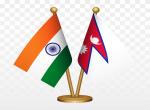
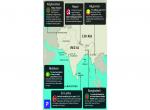
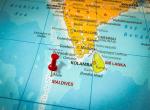

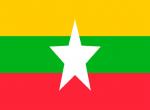
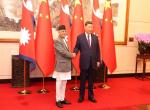
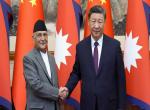
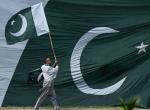
Post new comment